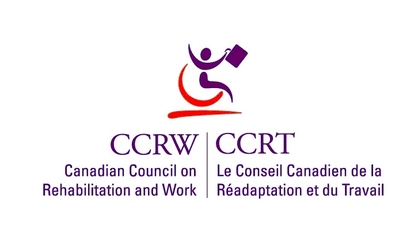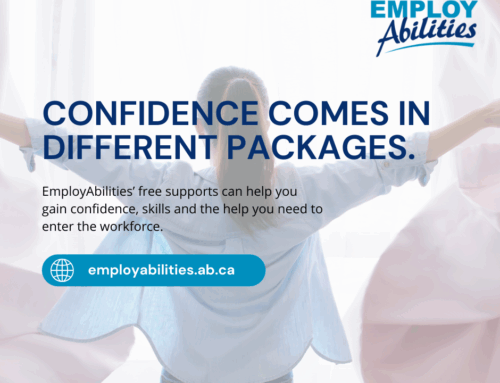Article from Ability & Enterprise Newsletter – Canadian Council on Rehabilitation and Work
Learning disabilities are often associated with difficulties in school but, given that they are lifelong and permanent, they can also have major impacts in the workplace. As an invisible disability, it is often not possible to know that an employee has a learning disability unless they disclose it but given that 1 in 10 Canadians has a learning disability it is likely prevalent amongst many employees in the workplace.
What are learning disabilities?
Learning disabilities (or LD’s) refer to various disorders associated with challenges in acquiring, organizing, retaining, understanding or using verbal and/or nonverbal information. This includes areas related to oral language, writing, reading, and/or or mathematics.
LD’s effect many different areas of an individual’s life and they are often described based on these impacts. Some common categories include organization and focus, social life, physical interaction, academics or processing (integration, input, output etc). For example, an individual described as having a LD impacting organization and focus may have difficulties with executive functions and struggle with organizing and planning. In other instances a specific type of LD is described, such as dyslexia which is associated with difficulties processing language and impacts reading, writing and spelling. It is important to note that there are many different ways to categorize and describe LD’s.
No matter how LD’s are categorized these disorders affect learning in individuals who otherwise demonstrate at least average intelligence and, in order to be diagnosed, an individual must exhibit clinically significant discrepancies between average abilities in one or more categories. Diagnosis is a complex process and, in Ontario, testing by a registered psychologist (or associate) is required.
Accommodating learning disabilities in the workplace
The barriers faced by employees with LD’s and accommodations to address them depend on a variety of factors including how the LD(s) impacts the individual, the nature of the job and job tasks and whether they already have strategies in place. Some employee’s may have had accommodations in the past, such as in school or previous jobs and may be very familiar with their barriers and strategies to address them. Other employee’s may be newly diagnosed or unfamiliar with accommodations or strategies. Some signs of LD’s in adults include; spelling errors, misreading information, difficulty interpreting information, poor grasp of abstract concepts, works slowly, struggling to summarize information and many other’s.
Accommodations
“Soft” workplace accommodations are one’s which do not pertain to equipment or products. Some examples commonly recommended for LD’S include alternative work arrangements, flexible hours, eliminating problematic non-essential job tasks, and modifying the way information is presented. For example, an employee with an LD impacting social skills may struggle with interacting with co-workers and may benefit from accommodations such as working from home and/or making work social functions option. For an employee whose LD makes it difficult to communicate verbally an accommodation may be to provide advanced notice of meetings and what will be covered to allow them time to prepare. An employee whose disability impacts time management may put several strategies in place themselves such as making to do lists and checking items off as complemented and having employer or co-worker send reminders for meetings and deadlines.
“Hard” workplace accommodations include technology, equipment and modifications to the physical environment. For example for LD’s which impact reading audio tapes or screen reading software can be beneficial whereas for employee’s whose disabilities impact writing voice output software can be beneficial. For LD’s which impact math there are several options of calculators such as one’s which “talk” as well as fractional and decimal calculators. There are also a variety of products including one’s which track time use and set reminders for those whose organizational skills are impacted.
In many instances accommodations for LD’s involve a mixture of both hard and soft accommodations. An employee with an LD impacting reading may benefit from hard accommodations such as converting audio and text as well as strategies such as allowing verbal in place of written responses. Similarly for an individual with difficulty spelling they may be provided with an electronic or talking dictionary in combination with being able to have more flexible deadlines to edit their written work or have it edited by a co-worker.
Challenges
There often are challenges for both employees and employers in accommodating LD’s in the workplace. For employees one major challenge beyond the impacts of their LD is disclosure; given that LD’s are an invisible disabilities individuals must choose whether to disclose or not to their employer. Common reasons for choosing to disclose include that accommodations are needed to do their job effectively, to provide an explanation for why they are struggling and that they feel comfortable with enough in the workplace/with employer to disclose. Some employee’s may even choose to disclose at an interview or before accepting a job or promotion so you can discuss the accommodations you require.
However, for a variety of reasons, employees may choose not to disclose. Some employee’s may either not require accommodations or already have strategies in place themselves. Other reasons’ employee’s may not disclose include feeling they lack a supportive environment, fear of discrimination and stigma; such as that disclosing will cause other’s to see them as inept or lacking intelligence.
For employers and managers there are also challenges. These include the fact that they may not fully understand or be aware of the LD and how it impacts the employee and have difficulty distinguishing between the impacts of an LD vs. preference or a lack of effort or motivation. There are also cases where the employee’s disability may impact a vital part of the job and, even with accommodations, it is not a good job fit. One major challenge for both employees and employers/manager’s is knowing what accommodations would be beneficial and help both parties to work effectively.






